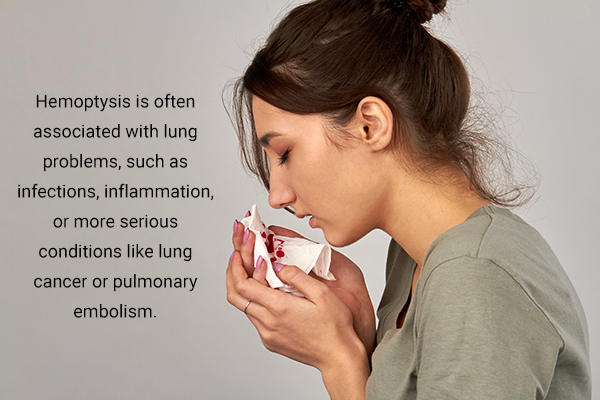In this article:
Your lungs are vital organs that play a crucial role in your overall health and well-being. They are responsible for supplying oxygen to the body and removing carbon dioxide.

However, sometimes the lungs may encounter trouble, and it’s important to be aware of the signs that indicate potential issues. By understanding these signs, you can take proactive steps to seek medical attention and ensure the health of your respiratory system.
This article will explore the signs that your lungs could be in trouble.
Warning Signs of Lung Problems
The following signs and symptoms could be indicative of lung problems and dysfunction.
1. Persistent cough
Chronic cough is a persistent cough that sticks around for a long time, usually 8 weeks or more and happening on most days.
While coughing can be a symptom of various lung and nonlung conditions, chronic cough lasts longer than the usual cough and can continue even after treating other conditions or ruling out other diseases.
Various factors can cause chronic cough. Some common causes include lung diseases such as chronic obstructive pulmonary disease (COPD), asthma, and pulmonary fibrosis. (1)
If you’re experiencing chronic cough that doesn’t seem to go away or gets worse, consult your healthcare provider at once.
2. Shortness of breath
Dyspnea, or shortness of breath, is when you find it difficult to breathe. It can vary in intensity and is a common symptom experienced by many people.
Dyspnea on exertion is a similar sensation where you feel short of breath during physical activities but get better when you rest. Dyspnea on exertion can be caused by respiratory issues such as asthma, pneumonia, lung cancer, and a collapsed lung. (2)
If you’re experiencing shortness of breath during physical activities or even at rest, consult a healthcare provider promptly. This sign could indicate underlying respiratory issues.
3. Wheezing

A high-pitched musical sound while breathing is called wheezing, and it could be a sign that something is blocking your airways. It’s commonly associated with conditions such as asthma, but it can also occur due to other factors such as foreign bodies, heart failure, and airway narrowing.
Wheezing may also occur due to respiratory infections such as croup or bronchiolitis and obstructive airway diseases such as asthma and COPD.
Experts say that having recurrent respiratory infections could be a sign of trouble with your lungs. (3)
So, it is essential to seek medical attention if you experience wheezing or any other respiratory symptoms. Proper evaluation and management can help identify the underlying cause and guide appropriate treatment. The goal is to ensure your lungs stay healthy and function optimally.
4. Chest pain
One of the most common symptoms of lung problems is chest pain. It can range from mild discomfort to intense pain. This pain can be caused by various respiratory conditions.
Pain that worsens when you breathe may be a sign of pleuritic chest diseases. These are conditions that affect the lining of the lungs and can cause sharp or stabbing pain with each breath.
Certain conditions such as pulmonary hypertension, lung cancer, and mesothelioma can cause constant pain in the chest that doesn’t change with respiratory movements.
If you’re experiencing ongoing and persistent pain, get it checked out right away. (4)
5. Chronic fatigue
Fatigue can be a major issue for people with lung diseases such as interstitial lung disease (ILD). It can make you feel tired all the time, affecting your quality of life, social interactions, and ability to work.
Fatigue in lung diseases is not just a simple thing. It can be caused or worsened by various factors, including different physical and mental aspects. (5)
Optimizing the treatment for the underlying lung disease is a crucial first step. Identifying and addressing any treatable causes of fatigue are also important.
6. Coughing up blood

Hemoptysis is the medical term for coughing up blood. Hemoptysis is often associated with lung problems, such as infections, inflammation, and more serious conditions such as lung cancer and pulmonary embolism.
So, hemoptysis could be a sign of an underlying lung problem that requires medical attention. It’s important to seek medical advice if you or someone you know is experiencing this symptom. (6)
Note: Massive hemoptysis is a condition where a person coughs up a large amount of blood, typically more than 600 milliliters (which is about the volume of a full kidney basin) within 24 hours.
7. Chronic mucus production
Researchers have found that chronic mucus production can lead to a gradual decline in lung function.
In one study, men with chronic mucus production had a higher decline in lung function compared to men without it. This finding suggested that chronic mucus production can affect lung health and can result in decreased lung function over time.
If you experience persistent mucus-related symptoms, seek medical attention immediately. (7)
8. Blue lips or fingernails
Sometimes, your body gives signs that something is not right with your lungs. One sign to watch out for is cyanosis, which is a bluish-purple color in certain areas such as the lips, mouth, earlobes, and fingernails.
Cyanosis happens when there’s not enough oxygen attached to your red blood cells in the bloodstream. It could be a signal that there’s a problem with your lungs or heart.
Normally, your lungs take in oxygen and send it through the blood to nourish your body. However, lung problems can prevent oxygen from entering the blood, leading to cyanosis.
Also, if there’s something blocking your airway, such as choking on an object or having croup, oxygen is restricted from getting into your lungs. Lung diseases such as asthma, pneumonia, and bronchiolitis can also cause cyanosis. (8)
Note: Experts add that an arterial oxygen saturation below 85% can cause cyanosis. However, it’s important to note that you can still have low oxygen levels even if you don’t show cyanosis.
9. Hoarseness of voice

Hoarseness, which refers to changes in your voice such as sounding rough or strained, can sometimes indicate lung troubles. It’s a common reason for people to visit their primary care doctors, accounting for about 1% of all consultations.
The causes of hoarseness can vary. It may be temporary, caused by conditions such as laryngitis, or it could be a sign of more serious problems, including tumors of the vocal cords. (9)
So, if your voice starts to sound different and hoarse, don’t ignore it. Seek medical advice to get to the bottom of the issue and take appropriate steps to address any potential lung-related problems.
10. Finger or digital clubbing
Digital clubbing is a medical sign where the tips of your fingers and toes become enlarged and round. This may be because of the lack of oxygen in the blood, which can lead to changes in the tissues of the fingertips.
Digital clubbing can also be a sign of underlying pulmonary or lung problems, such as lung cancer. So, it is important to stay aware of any changes in your digits and take timely action. (10)
11. Recurrent fever
Febrile illnesses or high body temperatures due to activities or the environment can affect the immune system and cell functions. This is particularly relevant when it comes to lung health.
Research has shown that elevated temperatures, such as fever-range hyperthermia (around 39.5°C), can have significant effects on the immune response and lung tissues. (11)
12. Abnormal breathing patterns
Abnormal breathing patterns can provide valuable insights into underlying lung issues: (12)
- Cheyne-Stokes breathing: This breathing pattern is characterized by rapid breathing followed by temporary cessation. It suggests compromised lung function and is often observed in individuals with severe neurological or cardiac diseases.
- Biot respiration: This breathing pattern involves irregular breaths grouped together with breaks in between. It can be a clue that there are issues with the lungs.
- Ataxic breathing: This breathing pattern is characterized by irregularity in terms of breathing rate, rhythm, and depth and could indicate problems in the part of the brain that controls breathing.
- Chest and abdomen coordination: Normally, the chest and abdomen work together during breathing. Changes in this coordination may suggest that the muscles involved in breathing are not functioning properly, which could be related to lung problems.
How to Know if Symptoms Are Pulmonary in Origin
Doctors can often figure out if symptoms such as shortness of breath, chest pain, wheezing, noisy breathing, coughing up blood, and coughing are related to lung issues.
They ask about the main symptom, any other symptoms such as fever and weight loss, and factors such as work, family history, recent travel, previous illnesses, and medications.
Previous test results, such as chest X-rays and tuberculosis skin tests, may also be considered. This information helps the doctor understand the symptoms and decide on the next steps for diagnosis and treatment.
Most-Asked Questions
Can smoking harm the lungs?
Yes, smoking can damage the lungs and increase the risk of lung diseases.
How can I keep my lungs healthy?
Maintaining good air quality, exercising regularly, and avoiding smoking are ways to promote lung health.
Can exposure to environmental pollutants affect lung health?
Yes, exposure to pollutants such as air pollution or chemicals can harm the lungs.
Can allergies affect the lungs?
Yes, allergies can cause respiratory symptoms and potentially lead to asthma.
What are the common symptoms of a respiratory infection?
Common symptoms of respiratory infections include cough, congestion, and sore throat.
Can stress affect lung health?
Excessive stress can contribute to respiratory issues and worsen existing lung conditions.
How can I detect early signs of lung disease?
Regular checkups, lung function tests, and awareness of symptoms can help detect lung disease early.
What other symptoms may indicate breathing problems?
When someone is having trouble breathing, they may breathe faster than normal (tachypnea) and use extra muscles in the neck and chest (such as the sternocleidomastoids, intercostals, and scalene muscles) to help them breathe. These signs indicate that the person is having respiratory difficulty.
Final Word
The lungs are an essential part of the respiratory system, and recognizing the signs that indicate potential lung trouble is crucial for maintaining optimal health.
If you experience persistent cough, shortness of breath, wheezing, chest pain, chronic fatigue, coughing up blood, recurrent respiratory infections, or other uncomfortable symptoms, it is time to get checked!
- Was this article helpful?
- YES, THANKS!NOT REALLY


